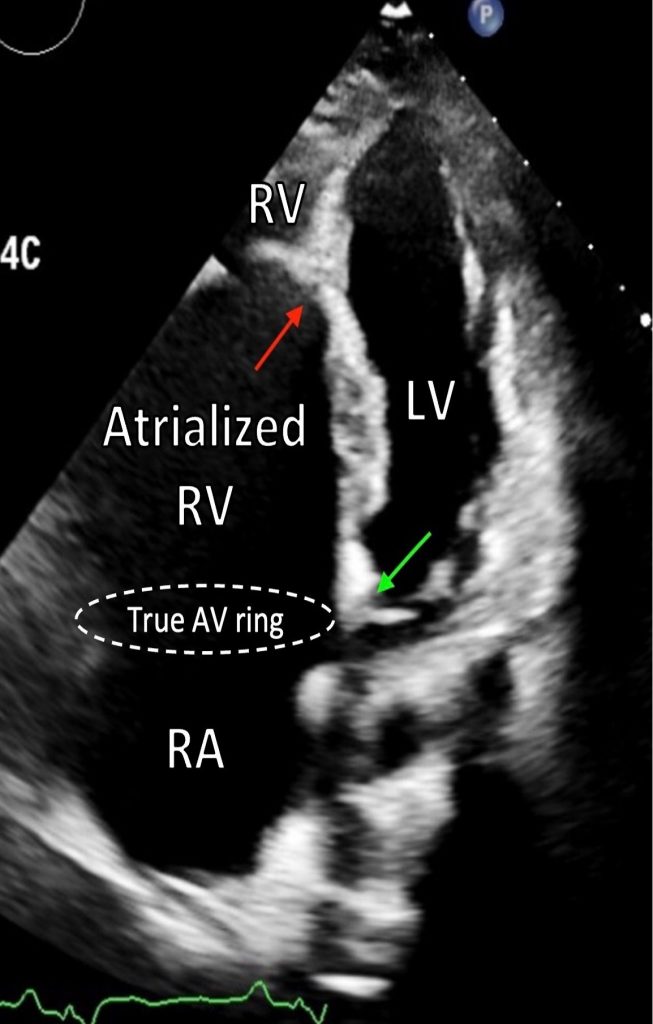The CASE Special Issue on adult congenital heart disease (ACHD) is now available with over 30 high-quality reports, including “The Utility of Multimodality Imaging in a Patient with Ebstein Anomaly” by McClelland et al. Author Isla McClelland, MD, remarked, “Ebstein anomaly patients in the adult cardiology clinic present a unique challenge to providers as they can be repaired or unrepaired and can present with progressive symptoms after many years of feeling well. Multimodality imaging gives providers the necessary tools to adequately follow and plan surgical intervention on these patients. Our case report presents an example of how these imaging modalities all work in concert to provide a complete medical picture of a patient’s valve anatomy and associated lesions, without which an appropriate surgical plan cannot be created.”
Most children born with congenital heart disease live beyond 50 years of age, so there are more adults with congenital heart disease living today than there are children. However, data suggests that less than 10% of adults with CHD receive the recommended subspecialty cardiovascular care. CASE Editor-in-Chief Vincent L. Sorrell, MD, FASE noted, ““It’s difficult to isolate a single report from this special issue on ACHD that should be highlighted since they all provide unique educational value related to their selected congenital abnormality. I have learned over the years that no two patients with ACHD are exactly alike. Therefore, having CASE reports as teaching examples to expand your diagnostic acumen is critically important. Malone et al. do an exceptional job of providing Journal readers with a CASE series on patients with double-chambered right ventricles. If you work in a moderate sized echo lab, you have no doubt scanned a patient with this pathology. The important question, though, is did you recognize it for what it was? These authors give you 3 CASE examples which include the typical 2D and comprehensive Doppler TTE findings, but also include ECG, fluoroscopic ventriculography, cardiovascular MRI, cardiac computed tomography and even an intraoperative surgical photograph. Their CASE series should be read by everyone who performs echocardiography and wants to improve their skills on detecting the next patient with DCRV who comes through their lab.”
This special issue serves as an educational tool, compiling reports from the adult echocardiographic community to develop more expertise in understanding these complex diseases and post-operative complications, as well as how best to acquire the necessary comprehensive images to assist in diagnosis and management.
Advanced tomographic multimodality imaging (MMI) substantially contributes to the management of patients with CHD (ACHD), so the Multimodality Imaging category is quite robust with six reports, including a rare diagnosis of a unilateral absence of a pulmonary artery in an adult with recurrent bronchopneumonia. The Coronary Artery Disease category emphasizes the role that TEE offers in patients after a Ross procedure, highlights the development of coronary aneurysms after congenital heart surgery, and includes reports that highlight the careful imaging approaches taken to anomalous left and right coronary arteries originating from the pulmonary artery.
Since one of the most common CHD pathologies in the adult is a bicuspid aortic valve, Valvular Heart Disease is an important subsection, including an extraordinary report on an 80-year-old patient with undiagnosed L-TGA who presented for TAVI evaluation. Patients with CHD are encouraged to maintain a record of their medical and surgical history, so the Post-Operative Pathology section is included with reports on the complications that may arise in the adult after various corrective surgeries for D-TGA, Ebstein anomaly, and atrioventricular canal defect. The subsection titled Interventional Echocardiography contains reports on novel transcatheter approaches to treat a patient with a primum ASD, a ruptured sinus of Valsalva aneurysm, pulmonic stenosis, and a left SVC to LA fistula.
Just Another Day in the Echo Lab offers many imaging tips and tricks among its reports, including a case series on patients variably presenting with a double-chambered RV, two patients evaluated for arterial hypertension during pregnancy, and a patient with cor triatriatum. Veterinary Clinical Cardiovascular Medicine rounds out this issue with reports in which readers will see many commonalities between diagnostic assessment in humans and animals. In this issue’s editorial, Dr. Sorrell encourages readers to expand their differential diagnoses in adults to include both common and uncommon forms of congenital heart disease.
Looking for a journal to submit your case report to? We want to hear from you! Email us with questions or submit your report today. Be sure to check out the latest Sonographer Sound-Off and Unlock the CASE features on the CASE Homepage to view more extraordinary work from your colleagues.

